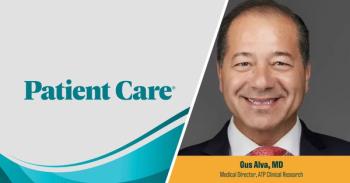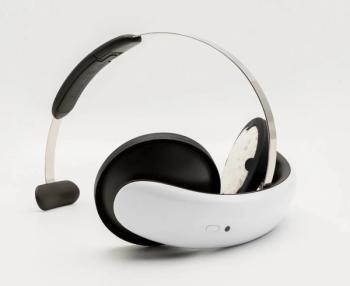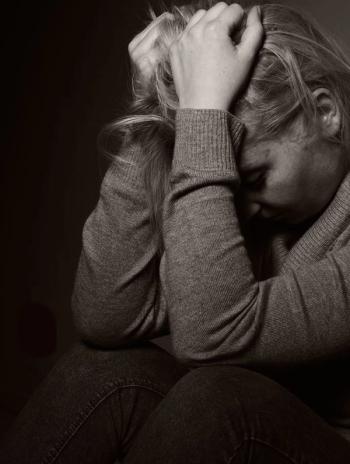
Psilocybin Viewed as Therapy or Research Tool
BALTIMORE -- Forty years after the psychedelic drug culture proclaimed that psilocybin induces a profound mystical and spiritual experience, investigators at Johns Hopkins have agreed.
BALTIMORE, July 12 -- Forty years after the psychedelic drug culture proclaimed that psilocybin induces a profound mystical and spiritual experience, investigators at Johns Hopkins have agreed.
There's magic in those mushrooms after all, researchers found in a double-blind trial that found the use of psilocybin can have a "substantial personal meaning and spiritual significance" even months later.
In one of the first rigorous studies of hallucinogenic drugs in the past 40 years, the investigators found that 61% of participants taking the drug - a serotonin-like derivative of the Psilocybe genus of mushrooms - had a "full mystical experience," as measured on established psychological scales, according to Roland Griffiths, Ph.D., the study's principal investigator.
Two-thirds of the 36 participants rated the psilocybin experience as either the single most meaningful experience or among the top five most meaningful experiences of their lives, Dr. Griffiths and colleagues reported in the online issue of Psychopharmacology.
Also, the researchers found, 79% of participants reported moderately or greatly increased well-being or life satisfaction two months after taking the drug, compared with those given a placebo at the same test session. Most said their mood, attitudes and behaviors had improved. All of the positive experiences where statistically significant at the P<0.001 level when compared to the placebo responses.
"Under very defined conditions, with careful preparation, you can safely and fairly reliably occasion what's called a primary mystical experience that may lead to positive changes in a person," Dr. Griffith said. "It's an early step in what we hope will be a large body of scientific work that will ultimately help people."
Possible applications, the researchers said, might be to treat intractable pain, depression, or anxiety. The work might also lead to new insights into the pharmacological and brain mechanisms underlying mystical experiences and the non-medical use or abuse of psilocybin and similar compounds.
Psilocybin, a tryptamine alkaloid that acts mainly at serotonin 5-HT2A/C receptor sites, is a Schedule 1 controlled substance.
The study was hailed as a "landmark" by Charles Schuster, Ph.D., director of the National Institute on Drug Abuse (NIDA), which funded the research along with the Council on Spiritual Practices. In a commentary accompanying the study, Dr. Schuster said the report shows that "we can objectively study the experiences reported by many to be profoundly spiritual and meaningful," as well as investigating their long-term consequences.
He added that agents such as psilocybin might one day be used to treat addiction to other drugs.
"Human consciousness in its ever-changing state is a function of the ebb and flow of neural impulses interacting in the various regions of the brain-the very substrate that drugs such as psilocybin act upon," Dr. Schuster said. "Understanding the brain mechanisms mediating these effects is clearly within the realm of neuroscience and deserves further intensive investigation."
Dr. Griffiths and colleagues enrolled 36 mostly university-educated participants from 24 to 64 years old. None had previously used hallucinogenic drugs and more than half were active in churches or other spiritual communities.
Thirty of the participants were randomly assigned to get either 30 mg per 70 kg of body weight of psilocybin or 40 mg/70 kg of Ritalin (methylphenidate hydrochloride) in a double-blind, between-group, crossover design. There were two eight-hour drug sessions two months apart, in which the participants remained in a comfortable room, listening to classical music, in the company of a monitor - a medical professional experienced in observing drug study participants.
The remaining six participants had three eight-hour sessions - one with Ritalin and two with unblinded psilocybin. The intention of the separate group was to obscure the study design to the participants and monitors; the data from the six was not part of the analysis.
A limitation of earlier studies has been that investigators and subjects - knowing who was getting the investigative drug - created expectations that led to biases in the results, the researchers said. For this study, both participants and monitors were blinded as to which drug was being used - a process that appeared to work, at least partly: overall, 23% of the sessions were misclassified by the monitors and even the most experienced monitor was wrong about what drug was used 17% of the time.
In evaluations after the drug sessions, 11 of the participants rated their "experience of fear" sometime during the drug session to be "strong" or "extreme" after they took psilocybin, the researchers reported. None of the participants had a fear response during the Ritalin sessions.
The fears -- which in some cases involved anxiety, dysphoria, or paranoia -- were "readily managed with reassurance" and none of the feelings lasted beyond the drug sessions, Dr. Griffiths and colleagues reported.
Dr. Griffiths was quick to distance himself from studies on LSD conducted in the 1960s by then-Harvard faculty member Timothy Leary. "We are conducting rigorous, systematic research with psilocybin under carefully monitored conditions, a route which Dr. Leary abandoned in the early 1960s," he said.
He also said it's not yet clear that the brain mechanisms underlying the psilocybin experience are the same as those involved in a spontaneous spiritual epiphany. "That work hasn't been done yet," he said.
Newsletter
Enhance your clinical practice with the Patient Care newsletter, offering the latest evidence-based guidelines, diagnostic insights, and treatment strategies for primary care physicians.





























































































































































































































































































